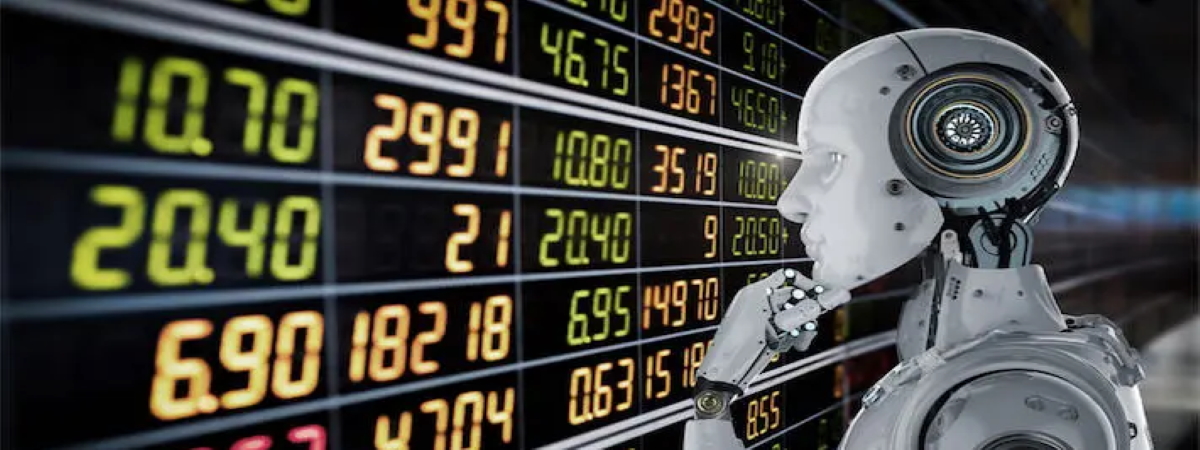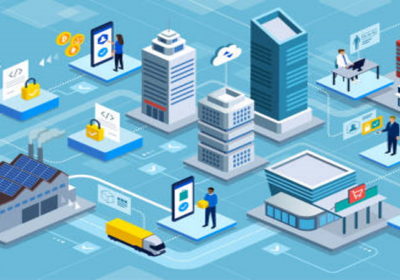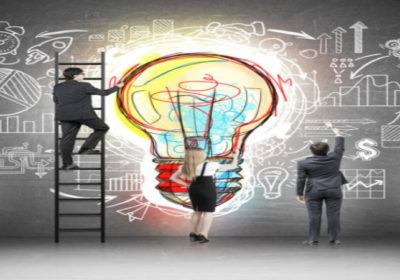
The ups and downs of prices that occur continuously in the currency markets are normally managed by the law of supply and demand, through which national and international operators who buy and sell financial assets in these exchanges manage and regulate with the thousands of orders to acquire or release the securities present in their investment portfolios.
It is well known that a large part of these operations, if not almost all of them, are in the hands of powerful computers with specialized software that analyze every millisecond the different existing possibilities to sell when the market can provide profits, and buy when the price is propitious for it. For several decades now, the power and capacity of the automatic trading programs that large operators and banking companies use for these tasks has been increasing exponentially and taking over the entire margin of action that was previously reserved for traditional “brokers”, people with high decision-making capacity who moved large sums of money for funds and private clients, and who, although they still exist, have been cornered by the powerful computer systems that take over 95% of all the movements that occur throughout a trading day. According to an article in Wired magazine, trading companies compete to have the best data centers and the highest speed fiber to communicate with the stock exchange centers, where a few milliseconds of difference can produce accumulated losses or gains that add up to millions in a short time. This is called HFC, high frequency trading, and it is estimated that at least 50% of market operations are handled by these programs.
A silent flow of money to corporate conglomerates
Who do these major traders’ computer systems serve – do they compete with each other to grab as many assets and profits as possible over their computer rivals? In a way yes, although their main programming is to maintain control over those assets for which they are programmed, and not to let them fall too much in price so that the company or institution on whose values they are speculating does not lose value. So, if these computers are programmed to maintain the value of an asset, how is it possible that sometimes a stock falls so sharply on the stock market and plummets, sometimes without warning or any obvious catalyst to cause it?
These are strategies of large investors who control not only that company, but also rival companies, that is, they have interests and a large part of the shares of many companies and companies in similar sectors and, therefore, “play” with the prices of the shares between them to make more or less profit by dropping some of the shares of a company to raise those of the rival or semi-rival company, in which they have at that time greater invested interests. In this way, they move the mass of the economic flow from one point to another of the financial network they control without having to make or execute direct monetary transfers between them, which could lead to suspicions by some regulatory body or to skipping some antitrust law, or simply to having to pay some other tax or something like that leaving a trace of the relationship between the two companies.
On the other hand, if you simply make a company that at that moment you do not want or are not interested in seeing go up a lot, go down, and you are the main owner or one of the big ones of the company, and you create demand on another one or a “panic effect” to move small and medium investors to where you are interested in obtaining more capital, this does not leave any kind of trace or raise suspicions if it is done through computer programs programmed for such function, and to maintain a certain balance or a certain flow of income towards one asset or another, depending on the interests of those who control both companies or conglomerate of companies.
When the “big guys” use their computer systems to control the flow of shares
This, a priori, seems more or less simple if we think that a couple or three quotations are at stake, and that it is a couple of computers that execute these operations for a small group of companies, the rest being on the sidelines. Nothing could be further from the truth. All the stocks on any stock exchange in the world are operating in the same way, because, in reality, according to a 2007 study by ETH Zurich, the entire economic fabric of the entire planet is controlled by fewer than 2,000 multinationals that control thousands of tens of other medium-sized companies, which in turn control hundreds of thousands of small companies. Since, in the end, only a few hundred companies are listed and quoted, these few less than 2000 international corporations “agree”, to a certain extent, and by sectors, and under rules not written in any official memorandum, to play with their listed securities and move currencies from one point to the other of the planet by listing several of the companies belonging to these business groups on different international stock exchanges, so that they can move the price in London while they sleep in Los Angeles and prepare to be listed in Hong Kong when they have closed in Europe.
The idea is to synchronize all the assets that a macro conglomerate owns 24 hours a day by listing several of its companies on different stock exchanges in different countries, so that there is no perceived correlation between them that might raise suspicions of financial manipulation and that they are rivals or competitors in the public eye, like some soft drink companies, which, at the “top” of the chain belong to the same pharmaceutical groups, but which appear to “fight” each other for control of the world beverage market when they are nothing more than two channels of income at astronomical levels for the same people, investment funds and boards of directors. In general, it is a system of identical operation for the majority of the main companies of the globe, and when one of the companies in particular wants to be boosted, the price of its immediate competitor is artificially dropped, through the purchase and sale orders managed by these powerful computer trading systems, to enter billions in the company that is revalued, and then, a few days later, balance the market again and make the one that was made to fall artificially rise again quietly and without arousing suspicions.
Playing the game of the big stock market players
This type of game leaves out the vast majority of small investors and stockbrokers, who cannot compete at these levels with programs of such capacity, even though they use “professional” programs such as TradingView or Metastock, to name some of the best known, but it allows the most clever and intelligent, knowing certain “maneuvers” such as the one we have just explained, to follow the dance of shares and take advantage of it. The rule is simple. When you perceive that a large company belonging to a major business group is falling, you should quickly analyze the state of the other shares of the other companies in the same group, even if they are listed on different international stock exchanges. You will notice that some of them will quickly rise in price and increase in value, attracting many investors who will believe that it is the next gold mine on the stock exchange. When this company has attracted many investors and collected the revenues it expected, its price stabilizes, and the other company in the group that fell in order to increase sales by applying the “panic by crash” rule will recover to more or less the same level after a reasonable period of time.
For an attentive investor, it is time to buy the company that is falling, as many people do, but not to sell immediately and to observe the behavior of other companies in the same group or sector that may be “related” at higher management levels. Not for nothing are there computer teams in large financial institutions dedicated 24 hours a day to refine these automated trading systems, adding rules that senior management dictates so that the programs run those price rises or falls that are of interest at any given time. It is not that the programmers themselves have much idea, in general, of what they are altering at a global level, since they only need to introduce certain parameters in the system to change certain behaviors in the buying and selling processes, but they do know in detail those on the board of directors or senior management who base their decisions and large-scale operations on the balance and the economic flow in and out of all the companies they control, regardless of whether they are from different sectors or whether they are competitors in any of them in the public eye.
The diversity of the stock market is just an illusion for small and medium investors, a way of capturing the economic flow of all those who are looking for their gold vein in the purchase and sale of shares. Obviously, we are not saying that you can not get a very good return being a broker and finding a way to keep up with these operations, buy and sell and make a living with it, you can and many people do it, but when we compare billions that a company earns in a few hours with this type of market manipulation vs. perhaps a few hundred or thousands of euros that can earn a person who is professionally dedicated to it, there is no comparison and it is not fair. The stock market system is designed by large corporations and for the benefit of large corporations, and it is becoming increasingly automated to leave less and less margin for professionals who buy and sell by doing the analysis and placing the orders themselves, or by managing investment funds for third parties.
As these large corporations earn more profits, they also invest in more powerful computer systems, even within the nascent world of quantum computing, something we will begin to see soon as the first trading programs are developed for this type of computers that are beginning to be already in the hands of companies like Google and some other major technology giant, which is why they seek their own piece of the pie, and how to enter the banking sector, as they have the technology to unseat any current traditional computer program that even the best bank may have in operation at this time.
The time for artificial intelligence is coming
With the entry of more powerful computers, the margin is reduced almost to zero for non-professionals, casual investors and brokers who are not extremely prepared to take advantage of the few opportunities that will remain, so that the control of the international economic system through stock market operations in stock exchanges around the world will be in the hands of three or four hyper-powerful systems, connected to each other and governed by artificial intelligence systems, using the knowledge that companies like Amazon, Apple or Google have in these fields right now. When these AIs dictate stock prices according to the interests of their programmers and can “sweep the house”, few multinational companies that cannot compete technologically with them will be left standing, at least in this area of stock market trading, and they themselves will possibly suffer the manipulation of their prices by other more powerful systems as they now manipulate theirs according to their own interests for their profit and loss accounts and balance sheets. At the moment, AI-based programs such as “I Know First” have already worked with 79 % reliability during 2019 in predicting the S&P 500, an American stock market index, and it is just one example of the path that this field of technology applied to the economy is taking on a large scale.
Consequently, and in summary, it is most likely that eventually the control of the majority of shares of most companies will be in the hands of the super-tech companies of the planet if, through the purchase and sale of these assets, their AIs end up gaining control and ownership of most of them, which is not so far-fetched nor is it something that we will have to wait long to see. It is the advance of technology applied to the economy, the control and power of a few giants over the rest of the business and industrial ecosystem of the planet, and within the so-called fourth industrial revolution that presents us with the tools to do so at an increasingly accelerated pace and with greater impact on the future of our society.



